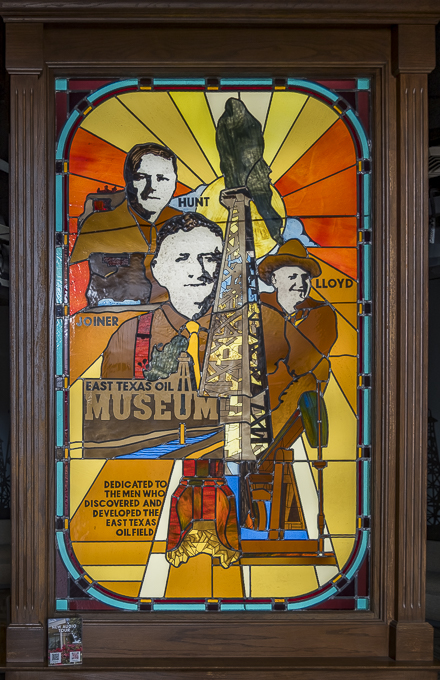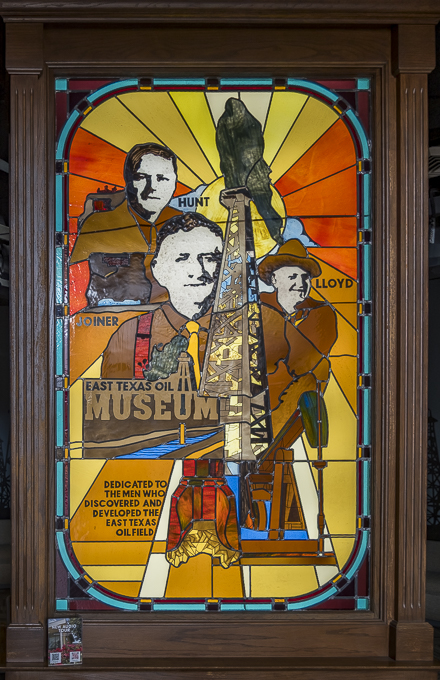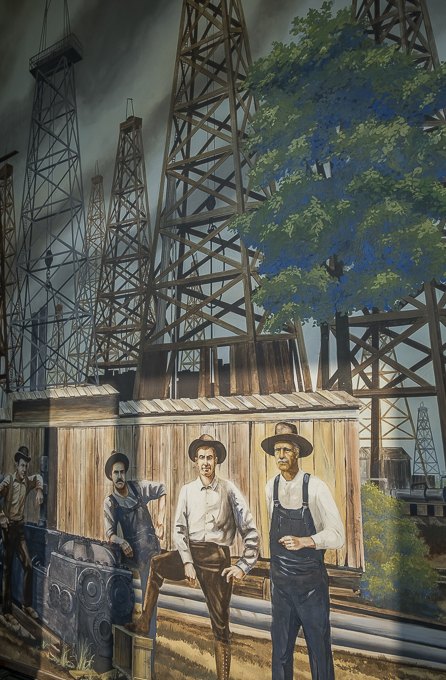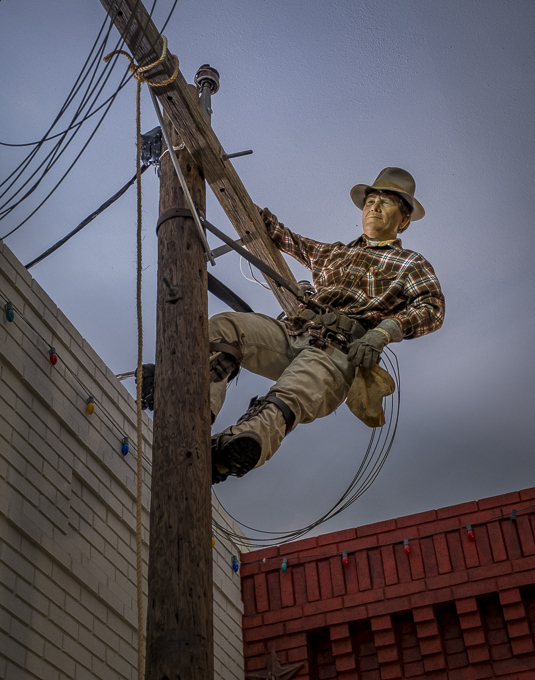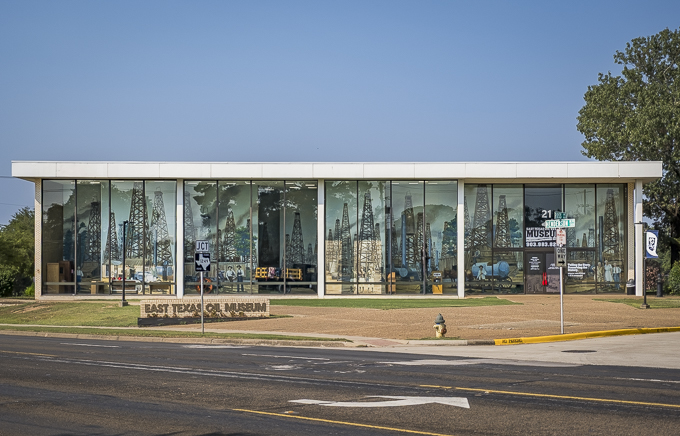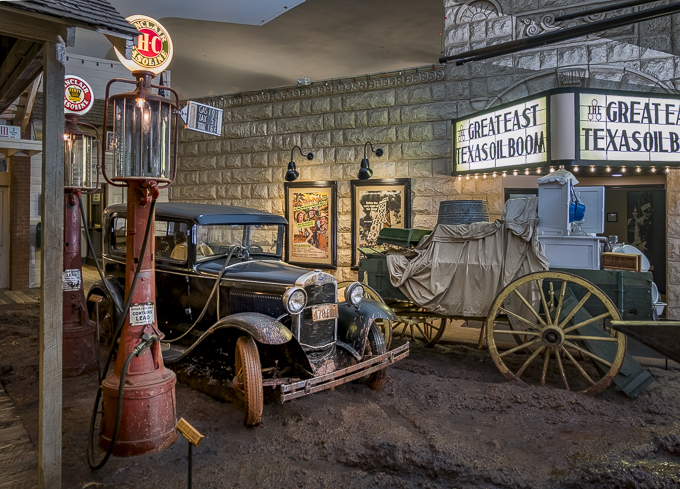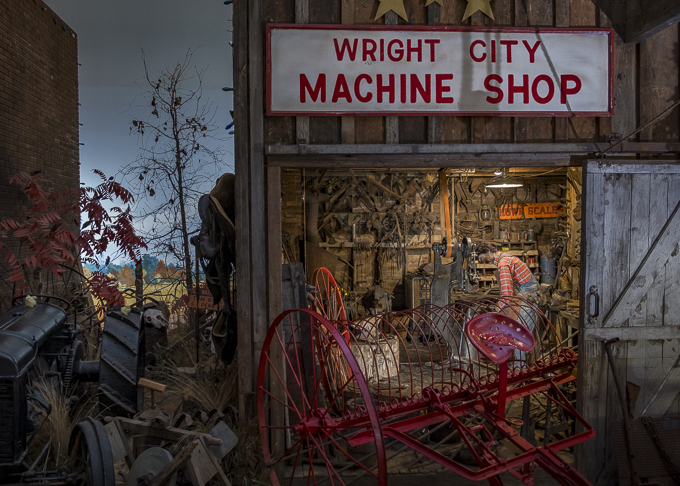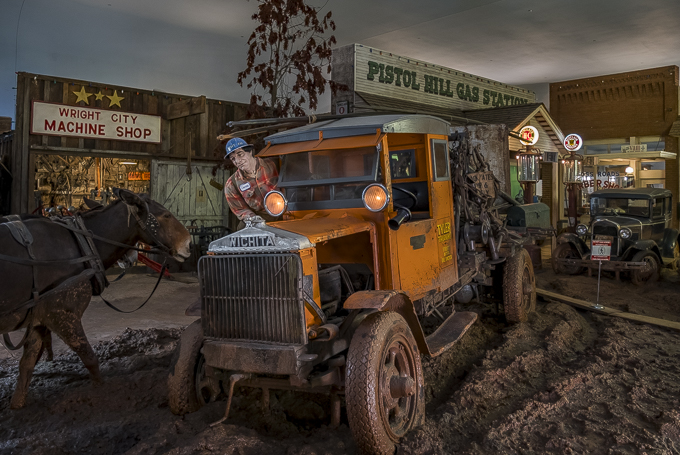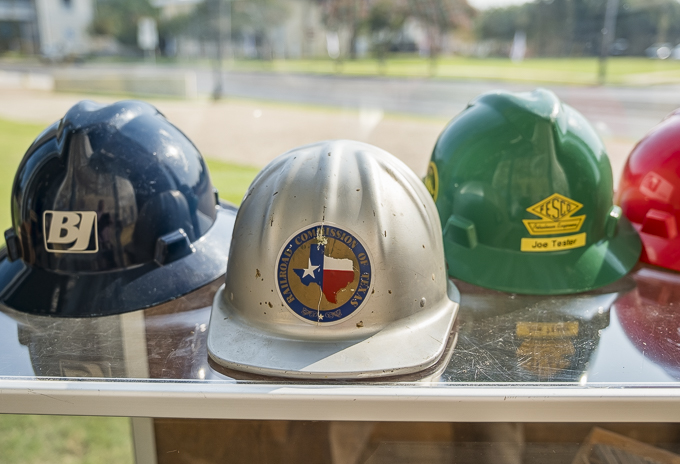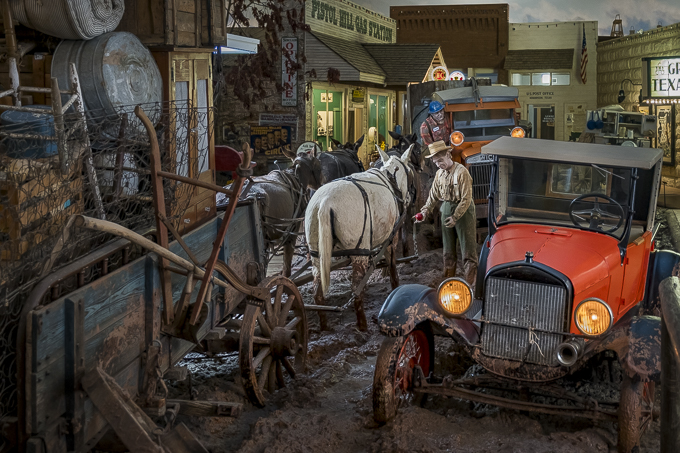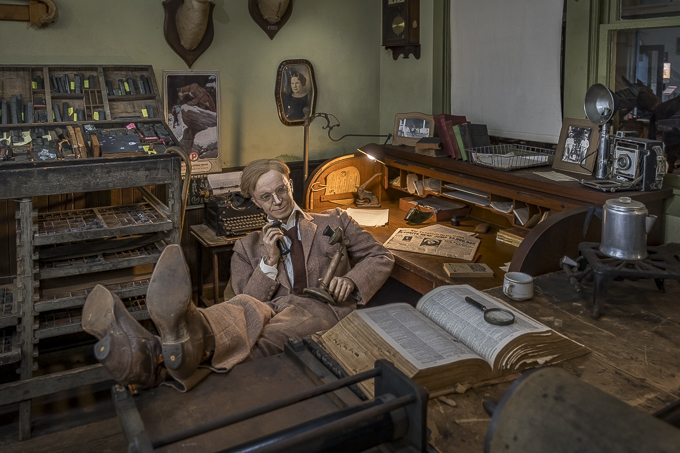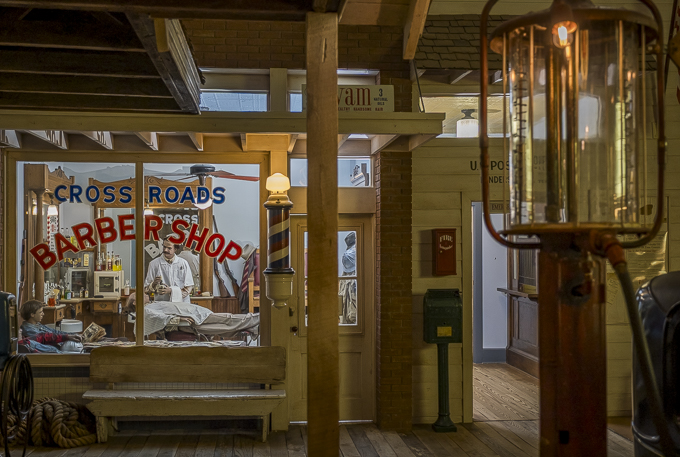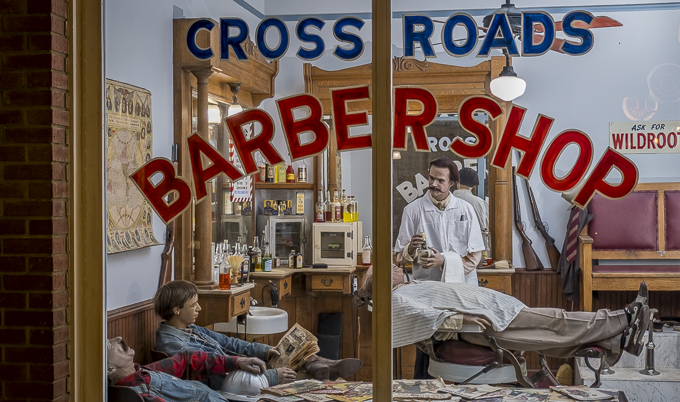This story is featured in the September/October issue of ETX View Magazine.
The legacy of the oil industry runs deep in East Texas and continues today.
An unforgettable discovery of a large oil field in East Texas in 1930 triggered a major boom, ultimately shaping local towns and beyond.
History of the boom
“The easygoing rural life of East Texas changed drastically with the discovery of oil during 1930 and 1931 when hardship, scorn, luck and wealth brought people, ideas, institutions and national attention to East Texas,” says the East Texas Oil Museum, a museum located on Kilgore College campus that aims to preserve this special history.
The story goes that 70-year-old Columbus Marion “Dad” Joiner had already drilled two dry holes when in May 1929, he spudded a third hole on the Daisy Bradford farm in Rusk County. But it wasn’t until Oct. 3, 1930 that a production test was done that resulted in a gusher, the museum says.
“Oil fever began to mount with a test by Bateman Oil Company on the Lou Della Crim farm,” the museum says. “On Sunday morning, Dec. 28, 1930, while Mrs. Crim was attending church, the well came in, flowing 22,000 barrels a day. This well was only 9 miles from Joiner’s well, yet no one believed there was any connection between the two. No one reckoned for what was then a geological phenomenon: an incredible deposit of oil in the Woodbine formation that ‘pinched out’ as it tilted upward against the Sabine Uplift.”
The initial boom was completed on Jan. 26, 1931, when J.K. Lathrop in Gregg County came in at 3,587 feet, producing 18,000 barrels a day. The well was situated on land assembled by B.A. Skipper, of Longview, and taken over by the Arkansas Fuel Oil Company, according to history provided by the museum.
After that, drilling increased rapidly from seven wells every two weeks to a whopping seven wells a day – and then to 100 per day and beyond. The first oil produced sold for $1.10 a barrel, but the price dropped to 15 cents as supply flooded the market, according to the museum.
Drilling activity spread to Upshur, Smith and Cherokee counties. Production was more than a million barrels a day at that point.
It was August 1931 when the National Guard was ordered into the area to “keep peace between roughnecks, lease hounds, oil speculators and camp followers,” according to the museum. “These actions finally culminated in legislative action: a market demand law, confiscation law, truck tender law, the refinery control and felony bill, and the Connolly Hot Oil Act of 1935, which restored order and stability.”
The East Texas Oil Field has produced 6 billion barrels of oil, and according to the museum, some of that gave allies the petroleum reserve stability needed to win World War II.
“The resulting wealth has produced new towns, new ways of living, and livelihoods for thousands of East Texas citizens. And the wells are still pumping,” the museum says.
And to honor that historic legacy that keeps flowing, The East Texas Oil Museum at Kilgore College, 1301 S. Henderson Blvd., exists as “a tribute to the independent oil producers and wildcatters, to the men and women who dared to dream as they pursued the fruits of free enterprise.”
Lasting legacy
The boom made way for thousands of jobs in several industries, beyond just drilling. It helped the state’s economy grow exponentially, with effects that have lasted into the present day. Oil wealth has been the source of funding for schools, hospitals, libraries, universities and more.
Inside the museum
The East Texas Oil Museum is a fascinating place that takes visitors to places far beyond memory lane.
“Here, visitors see the people, their towns, their personal habits, their tools and their pastimes – all colorfully depicted in dioramas, movies, sound presentations and actual antiques donated by East Texas citizens,” the museum says.
The museum houses the authentic recreation of oil discovery and production in the early 1930s from the largest oil field inside the United States.
“Journey back into the early 1930s to see how people lived. Refresh your memory to the lyrics of a deep-rooted gospel hymn in the church exhibit,” the museum says. “Get a lesson in the history of local schools. Imagine how that antique car in the transportation exhibit ever got anywhere on those rough, rutted roads.”
And don’t miss a visit into Boomtown, USA. This little, full-scale town features stores, people, animals and machinery – all of which depict the lively activity of a town booming in oil. Visitors can go inside the Arp General Store or the Overton Drugstore to get a look at what routine shopping trips were like for residents of the 1930s. There’s a Gusher Gazette newspaper office, barbershop gas station and more.
One highlight of the museum is the Boomtown Theater, where visitors can sit and watch historical footage from the boom period and feel a blowout gusher.
A visit “is not complete without a trip to Boomtown’s very own Gladewater Museum,” the museum says. “Study the geographical exhibits and take the Elevator Ride to the Center of the Earth with Professor Rockbottom. Let your guides take you 3,800 feet below the earth’s surface to where oil deposits lie. It’s fun and informative.”
East Texas Oil Museum Thursday, August 6, 2025, in downtown Gilmer ( Les Hassell/News-Journal Photo)
East Texas Oil Museum Thursday, August 6, 2025, in downtown Gilmer ( Les Hassell/News-Journal Photo)
East Texas Oil Museum Thursday, August 6, 2025, in downtown Gilmer ( Les Hassell/News-Journal Photo)
East Texas Oil Museum Thursday, August 6, 2025, in downtown Gilmer ( Les Hassell/News-Journal Photo)
East Texas Oil Museum Thursday, August 6, 2025, in downtown Gilmer ( Les Hassell/News-Journal Photo)
East Texas Oil Museum Thursday, August 6, 2025, in downtown Gilmer ( Les Hassell/News-Journal Photo)
East Texas Oil Museum Thursday, August 6, 2025, in downtown Gilmer ( Les Hassell/News-Journal Photo)
East Texas Oil Museum Thursday, August 6, 2025, in downtown Gilmer ( Les Hassell/News-Journal Photo)
East Texas Oil Museum Thursday, August 6, 2025, in downtown Gilmer ( Les Hassell/News-Journal Photo)
East Texas Oil Museum Thursday, August 6, 2025, in downtown Gilmer ( Les Hassell/News-Journal Photo)
East Texas Oil Museum Thursday, August 6, 2025, in downtown Gilmer ( Les Hassell/News-Journal Photo)
East Texas Oil Museum Thursday, August 6, 2025, in downtown Gilmer ( Les Hassell/News-Journal Photo)
Go for a visit
Supporting the museum helps it continue to preserve this crucial local history through period artifacts, oral histories and primary source documents. Together, the museum says these elements are a “mosaic” that document East Texas in the 1930s.
Locals are welcome to volunteer for the museum or purchase memberships.
The museum is open from 9 a.m. to 5 p.m. Monday through Saturday each week, with the last entry at 4 p.m.
For more information, visit easttexasoilmuseum.kilgore.edu .
